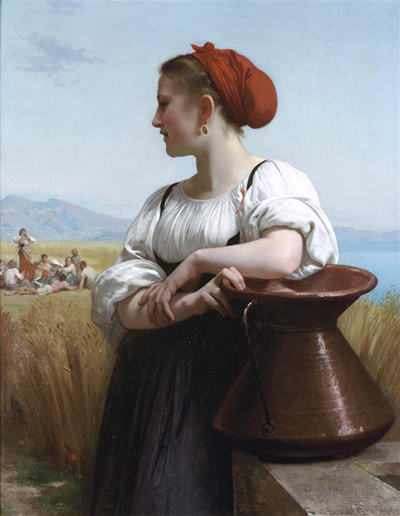Moissoneuse is a painting in oil on canvas by the French artist William Bouguereau (1825-1905).
It was produced in 1868, at a time when the artist's powers were approaching their peak and his fame was steadily growing. A fairly large painting, it measures roughly 106 cm by 85cm.
The title of the painting means "reaper" – like many 19th-century artists, Bouguereau had become interested in showing agricultural and rural scenes.
These created a striking comparison with the increasing industrialisation of urban French life as a result of the Industrial Revolution.
These were also popular with the public for similar reasons, a factor which helped Bouguereau's more pastoral works to be highly sought after in his own lifetime.
Moissoneuse is richly coloured, giving it a hint of the Renaissance, as does the formal composition. Bouguereau was an admirer of Raphael, and his influence can be seen in the elegance and richness of the piece.
It is a notably secular painting, contrasting with the religiously-inspired works which he had produced up until the 1860s. This change was motivated in part by the desire to gain a broader audience and thereby maximise his commercial appeal.
The piece depicts either an Italian woman or a Breton one; alternative titles for the work exist that suggest both possibilities. At the time it was painted, the artist had recently spent several summers in southern Brittany.
The woman's complex post and the play of light and shadow on her face are indicative of Bouguereau's techical virtuosity. They contrast vividly with the bolder, more dramatic colours of her scarf, as well as the brighter colours of the sky, sea and cornfield behind her.
Moissoneuse has passed through a number of owners. Just a few months after its creation, it was sold to a London dealer, and in the early 20th century it was acquired by a private collector in Pittsburgh, USA.
Various American galleries owned it around the time of World War Two, but it returned to private hands and was sold by Sotheby's for just under $800,000 in 1989.




